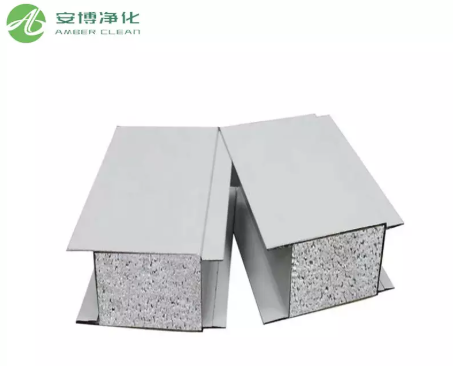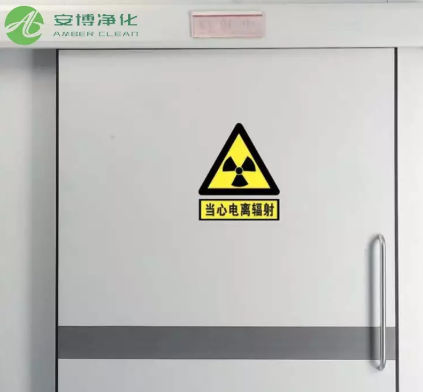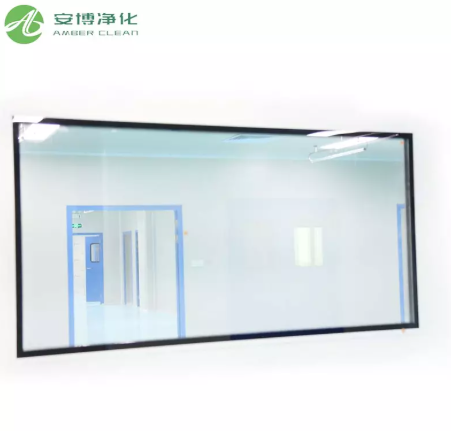- All
- Product Name
- Product Keyword
- Product Model
- Product Summary
- Product Description
- Multi Field Search
Views: 268 Author: Site Editor Publish Time: 2025-08-25 Origin: Site








Clean room panel systems are vital in industries that require strict contamination control, such as pharmaceuticals, medical devices, and electronics. These systems ensure optimal air quality, temperature, and humidity levels, preventing contaminants that could jeopardize product quality.
In this guide, you'll learn the essential steps for assembling a clean room panel system. We'll also cover best practices to ensure a seamless and efficient installation process.
Cleanroom walls and panels are the backbone of any cleanroom assembly. They must provide a sterile environment, preventing contaminants from entering and ensuring the integrity of the space.
Materials Used in Cleanroom Walls and Panels
Cleanroom panels are typically made from materials like aluminum, steel, or vinyl-coated surfaces. The interior often includes insulation materials like polystyrene or polyurethane, which help maintain temperature and humidity levels.
Types of Cleanroom Panel Systems
Sandwich Panels: These consist of two outer layers of a durable material with an insulating core. They are popular for their efficiency in thermal and sound insulation.

Rigid Walls: These panels are designed for a more robust construction and are often used in areas requiring high durability.
Modular Systems: These pre-fabricated panels are easy to assemble, making them ideal for quick installations and modifications.
Why Material Selection Matters for Cleanroom Performance
The materials used in cleanroom walls and panels must meet strict standards for cleanliness and durability. Choosing the right material ensures that the cleanroom can maintain optimal conditions for manufacturing sensitive products.
Ceiling systems are an integral part of cleanroom construction. They support airflow and filtration systems, ensuring the cleanroom maintains its designated cleanliness class.
Role of Ceiling Systems in Cleanroom Assembly
Ceiling systems typically house fan filter units (FFUs), lighting, and air handling equipment. They need to be precisely installed to ensure that they do not disrupt air circulation or the cleanroom’s integrity.
Importance of HVAC Integration for Airflow and Temperature Regulation
HVAC systems must be carefully integrated into the ceiling structure to provide consistent airflow and temperature regulation. This integration is essential for maintaining the cleanroom environment's stability, preventing contamination, and controlling the air change rate (ACR).
Windows and doors are crucial components of cleanroom panel systems. They allow for controlled access and observation while maintaining the cleanliness of the environment.
How Windows and Doors Fit into the Panel System
Windows and doors are strategically installed to minimize any impact on the cleanroom's integrity. They are usually sealed tightly within the panel system to avoid any gaps that could allow contaminants to enter.

Special Features of Cleanroom Doors and Windows for Contamination Control
Cleanroom doors are often designed to be airtight and feature smooth surfaces that are easy to clean. Windows may have UV filters or anti-static coatings to prevent contamination. Additionally, they may be designed to be resistant to impact and chemicals used in cleanroom environments.
These key components work together to create a safe, efficient cleanroom environment, ensuring that cleanroom manufacturing processes can proceed without interference from contaminants.
When choosing a cleanroom panel system, the two most common options are modular and stick-built systems. Both have distinct features that make them suitable for different cleanroom manufacturing environments.
Comparison Between Modular and Stick-Built Cleanroom Panels
Modular Panels are pre-fabricated, factory-made, and assembled quickly. They are designed for flexibility, allowing easy reconfiguration or expansion.
Stick-Built Systems are constructed directly on-site. These panels are typically custom-built, making them ideal for highly specialized cleanrooms but requiring more time and labor.
Benefits and Drawbacks of Each Type
Modular Panels:
Benefits: Faster installation, less on-site labor, easier to modify or expand, and more cost-effective in the long run.
Drawbacks: Limited customization, although some flexibility is offered.
Stick-Built Systems:
Benefits: Highly customizable and ideal for complex layouts or unique cleanroom requirements.
Drawbacks: Longer build times, higher labor costs, and more potential for errors during construction.
Another critical factor to consider is whether to use pre-fabricated systems or to assemble cleanroom panels on-site.
Differences Between Pre-fabricated Cleanroom Systems and Systems Assembled On-Site
Pre-fabricated Systems are made off-site in a controlled environment, then shipped and assembled on location. They ensure consistent quality and faster installation.
On-Site Assembly involves assembling the cleanroom system directly at the construction site, allowing for more flexibility in design.
Time and Cost Efficiency Considerations
Pre-fabricated Systems tend to be quicker and more cost-efficient. Since materials are pre-made, installation time is reduced, and fewer mistakes occur on-site.
On-Site Assembly often takes longer and can be more expensive due to additional labor and potential delays. However, it offers the advantage of full customization to meet specific needs.
Each system has its advantages depending on the size, complexity, and timeline of the cleanroom manufacturing process. Understanding the key differences can help you make a better decision for your cleanroom panel system.
Before starting assembly, it's crucial to plan and design the cleanroom based on its intended use. Understanding the specific needs, like airflow and contamination control, is key.
Review Blueprints and Specifications Ensure the cleanroom design aligns with regulatory standards and client specifications.
Measuring Available Space Accurately Precise measurements are essential to avoid costly mistakes during installation.
To assemble the cleanroom panel system, you’ll need the right materials and tools. This includes:
· Materials: Panels, screws, insulation, and seals.
· Tools: Tape measure, screwdrivers, laser levels, power drill, and pliers.
These items are necessary for accurate and efficient assembly.
The first step in installing the panels is preparing the floor.
How to Prepare the Floor for Wall Panel Installation The floor must be level to ensure the wall panels align properly. Any discrepancies here will affect the panel installation.
Importance of Accurate Installation Accurate floor track installation ensures straight wall alignment, preventing structural issues later.
Next, the wall panels are fitted and secured.
Step-by-Step Process Place the panels in the designated slots and fasten them securely using screws and other fasteners.
Common Issues During Panel Installation Issues like misalignment or gaps between panels can arise. To avoid this, regularly check the alignment and level of the panels.
Once the panels are in position, they must be firmly fastened.
How to Ensure Proper Fastening Use a power drill and screws to secure each panel tightly, ensuring they don't shift during construction.
Tools and Techniques for Wall Panel Installation A laser level helps maintain straight lines, while clamps can hold panels in place as you fasten them.
The ceiling system plays a crucial role in maintaining cleanroom conditions.
How to Install Ceiling Beams Ceiling beams must support heavy equipment like fan filter units (FFUs). Secure them using the right tools to ensure stability.
Ensuring the Ceiling Supports Adequate Airflow Ceiling systems must be installed with enough space for airflow and ventilation to meet cleanroom standards.
FFUs are essential for maintaining air quality.
Importance of FFUs These units filter the air and regulate the cleanroom's pressure. They help achieve the desired cleanliness level in the space.
Steps to Install the Ceiling Grid and FFUs After installing the ceiling beams, position the FFUs on the grid and secure them for optimal air filtration.
Windows are integral to the cleanroom panel system for visibility and accessibility.
Step-by-Step Guide to Installing Windows Position the window within the panel structure and seal it tightly to avoid contamination.
Why Windows Must Be Sealed Correctly Proper sealing prevents any air leaks that could compromise the cleanroom's controlled environment.
Doors are another critical part of cleanroom assembly.
Installing Doors Depending on the design, cleanroom doors can be sliding, hinged, or automatic. Ensure they fit snugly within the panels and are easy to seal.
Types of Cleanroom Doors Choose the appropriate door type based on space, traffic flow, and contamination control requirements.

Integrating HVAC systems is vital for maintaining the cleanroom environment.
How to Integrate HVAC Systems with Panels Install the necessary ducts, vents, and air returns while ensuring all gaps are sealed.
Importance of Proper Fit for Air Circulation A proper fit ensures efficient airflow and temperature regulation, keeping the cleanroom within specified parameters.
Once the HVAC system is integrated, testing is necessary.
Steps to Ensure the HVAC System is Working Properly Test for proper air pressure, temperature control, and airflow. Ensure the system meets the required specifications.
Verifying Airflow, Pressure Balance, and Temperature Control Use airflow meters and temperature sensors to ensure the system is balanced and fully functional.
Before certifying the cleanroom, inspect the entire installation.
Final Inspection Steps Check for any loose panels, gaps, or areas where contaminants could enter. Correct any imperfections.
Identifying and Correcting Imperfections A final review ensures all components meet the design specifications, guaranteeing the cleanroom’s effectiveness.
The cleanroom must undergo rigorous testing to ensure it meets cleanliness standards.
Testing Air Quality, Temperature, and Humidity Levels Use particle counters, temperature probes, and humidity sensors to ensure the room is operating as expected.
Ensuring Cleanroom Certification After passing all tests, the cleanroom is ready for certification. This ensures it meets regulatory and operational standards before going live.
One of the most common mistakes during clean room panel assembly is improper measurements.
· How Improper Measurements Can Lead to Increased Costs and Delays If measurements are incorrect, panels may not fit as intended, causing delays. Fixing these mistakes often requires ordering new materials, leading to additional costs. Accurate measurements are essential to avoid these setbacks and ensure a smooth assembly process.
Another issue that can impact clean room panel system assembly is the use of low-quality materials.
· The Importance of Using High-Quality Materials for Long-Term Cleanroom Performance Using substandard materials can compromise the cleanliness and durability of the panel system. High-quality materials ensure better insulation, easier maintenance, and longer-lasting performance, crucial for maintaining a sterile environment in clean room manufacturing.
Gaps between panels or around windows and doors can allow contaminants to enter the cleanroom.
· Ensuring All Gaps Are Sealed to Prevent Contamination Proper sealing is essential to maintain air quality and cleanliness standards. Use high-quality sealants and regularly check for any wear or damage. Neglecting this step can lead to compromised cleanroom conditions, affecting product quality.
To keep a cleanroom system functioning efficiently, regular maintenance is vital.
· The Importance of Regular Checks to Maintain Panel Integrity and Cleanliness Schedule periodic inspections to ensure panels, doors, windows, and HVAC systems remain in good condition. Cleaning and re-sealing panels as needed will help prevent contamination and ensure the cleanroom continues to meet required standards.
As technology advances, upgrading clean room panels and systems might become necessary.
· When and Why to Upgrade or Replace Cleanroom Panels and HVAC Systems Over time, panels may degrade, or HVAC systems may become less efficient. Regular evaluations will help determine when upgrades are needed. Replacing outdated components ensures that the cleanroom maintains the required air quality, temperature, and humidity levels.
Correct assembly directly affects cleanroom operations by ensuring consistent airflow, temperature, and contamination control. A well-assembled system minimizes risks of contamination, maintaining high standards for product quality and safety.
A properly assembled cleanroom panel system leads to fewer repairs and replacements, reducing long-term operational costs. Efficient system performance lowers energy consumption, extends the lifespan of equipment, and reduces the need for frequent maintenance, providing significant cost savings over time.
Q: What materials are cleanroom panels made of?
A: Cleanroom panels are typically made from materials like aluminum, steel, vinyl-coated surfaces, and polystyrene or polyurethane cores. These materials ensure durability, insulation, and ease of cleaning, maintaining the cleanroom's controlled environment.
Q: How long does it take to assemble a cleanroom panel system?
A: The time to assemble a cleanroom panel system depends on the complexity and size of the project. On average, it can take anywhere from a few days to several weeks for full installation.
Q: Can I install cleanroom panels myself, or do I need a professional?
A: While DIY is possible for simple installations, hiring a professional is recommended for complex cleanroom designs. A construction specialist ensures proper installation, compliance with regulations, and long-term performance.